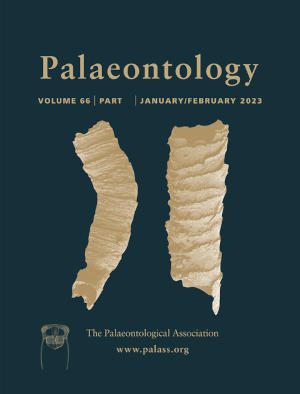Article: Macroscopic fossils from the Chuanlinggou Formation of North China: evidence for an earlier origin of multicellular algae in the late Palaeoproterozoic
Publication: Palaeontology
Volume:
66
Part:
6
Publication Date:
2023
Article number:
e12685
Author(s):
Jingqi Liu, Yang Zhang, Xiaoying Shi, Anfeng Chen, Dongjie Tang, and Tinglu Yang
Abstract
Abstract Multicellular algae are the core topic for understanding the early life evolution on Earth. The timing of origin and cellular differentiation of multicellular algae, however, remains poorly constrained. The Palaeoproterozoic to early Mesoproterozoic is a critical period during which multicellular algae began to occur and evolve in marine environments. This paper reports well-preserved multicellular fossils from shales of the Chuanlinggou Formation (c. 1.64 Ga) in North China, with emphasis on their holdfast and putative cellular structures. These macroalgal fossils are reasonably diversified and include Chuaria circularis, Tawuia sinensis, Tawuia robusta, Glossophyton ovalis, Glossophyton sp., Tuanshanzia sp. and Changchengia sp.; mainly preserved as carbonaceous compressions, with a few sideritized forms. Field emission scanning electron microscope (FESEM) observation revealed multicellular structures in Chuaria, confirming its biological attributes of a multicellular eukaryote and providing direct evidence that multicellular algae had already originated by the terminal Palaeoproterozoic, earlier than previously speculated. Tuanshanzia sp. and Changchengia sp. developed with a bare rhizome holdfast, suggesting that they had a benthic sessile lifestyle in their late Palaeoproterozoic oceanic habitat.
